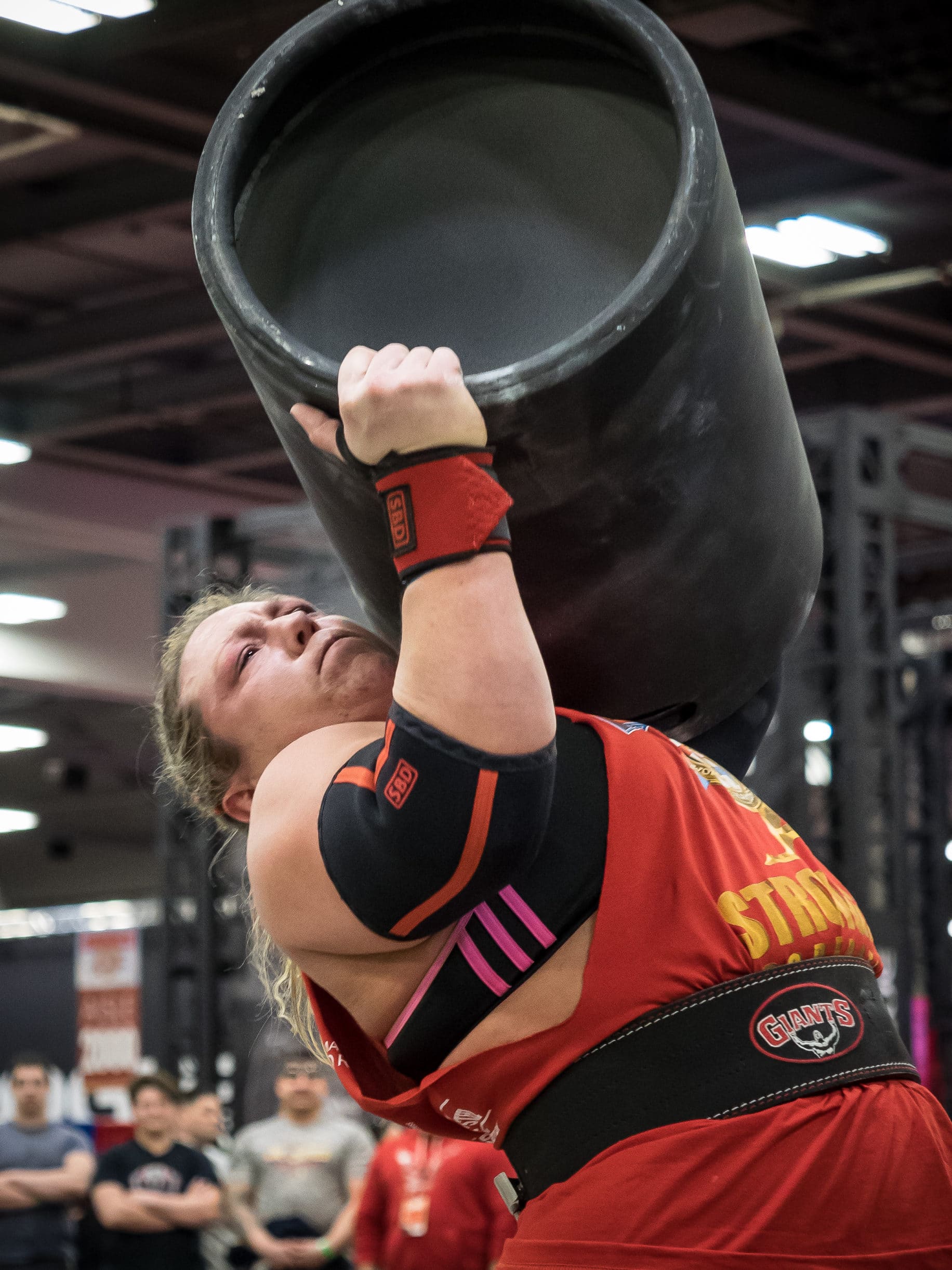I work in a cubicle.
To be fair, it’s a decent-sized cubicle with a window that looks out onto a forested area, but as I sit here trying to prepare for my upcoming strongman competitions, I can’t help but think that as each passing minute goes by, I’m putting myself at a greater and greater disadvantage just by sitting here.
I have noticed my posture and eyesight deteriorating quickly, and it makes me think about elderly people almost completely bent over, struggling to walk, and squinting through thick glasses. Are these markers of aging coming more quickly because I am sitting all day, or am I simply aging?
The longest, most comprehensive studies have failed to show a concrete link between sitting and morbidity but in my opinion, the anecdotal evidence is overwhelming. One thing is for sure: besides eye strain and bad posture (which I suppose is up to you), is that sitting tightens up your hamstrings, hip flexors, and abdominals – and if your posture is poor, chest, shoulders, and intercostals as well. The list probably goes on, but you can see the obvious ramifications of these key performance muscles not being able to perform at their best.
[Hate the feeling of a long day of sitting? Try these 8 stretches to unlock your hips.]

Image: Michele Wozniak
Ryan Largay, fifth-place finisher in the 2017 Official Strongman Games’ -90kg division, sees it both ways.
“It’s not totally a bad thing to have a sedentary job for a strongman athlete,” he says. “Most of the time these people are able to get their nutrition in as well as be fairly rested for training.”
He points out that it’s great to not be sitting on your butt all day, but constantly being on your feet and exercising can interfere with training and make it harder to keep your feeding on point.
“I used to pour concrete foundations, some days were more demanding than others but it would make a heavy yoke session very difficult!” he says. “Somewhere in the middle is best: a moderately active job, something that is light activity and the demands on the body doesn’t change much from day to day.”
Image: Michele Wozniak
If you do sit all day, get up once in a while and move around. If you’re in an active job, make sure your nutrition is on point and you may have to reschedule certain training sessions around, depending on what your body went through at work.
There may be no perfect occupation for an athlete besides “professional athlete”, so for the weekend warrior such as myself, the best we can do is recognize environmental factors that may be holding us back and improve them with focus on diet, mobility, and proper programming. Being more mindful is essential for slowing, stopping, and even temporarily reversing the inevitable decline of our physical faculties over time.
It is possible to compete as an office worker, but you have to be cognizant of and struggle against the torture devices – chairs, desks, screens — that are sapping not just your strength, but your vitality on a daily basis. An athletic career is a repetitive process of two steps forward and one step back. Sitting at a desk all day is another invisible step backward, so in order to be on an even playing field, the office worker must take three steps forward for every two steps other athletes take. The ways to accomplish this are up to you, but i’ve found these tips to be useful.
1. Set a Regular Reminder for Your Posture
My phone has a reminder every fifteen minutes to remind me to fix my posture. You could also use Upright Go, a device that detects when you’re slouching and gently buzzes to remind you to stay upright. There are a few methods you could employ to fix screen slouch, but the important thing is to realize it is hampering your performance, bloodflow, and longevity.
2. Get Up and Move
I move around quite a bit compared to my coworkers, but after learning of a study that showed short walks throughout the day were more effective at at improving well-being than one long morning walk, I decided to try to get up at least once per hour and walk to the water cooler.
3. Drink Lots of Water
This will get you up and to the bathroom at least once per hour if done right, along with a host of other benefits that come from drinking more water. I like to think of water as motor oil – if your urine is dark, you’re damaging your engine.
https://www.instagram.com/p/BQImPn_gc0Q/
4. Change Your Routine
Try getting some early morning cardio in just to see how it affects your day. I also like to use my lunch for a quick cardio session, which helps me eat less when that’s my goal. I do find that early evening is the best time for lifting, so I would keep these lunchtime and morning sessions cardio-only, or dedicate those times for mobility work.
5. Engage Your Core in the Office
Some people report good results sitting on a physio ball, but I’m personally a huge fan of doing a one-minute plank every hour. Better stability, posture, and performance awaits.
6. Remember Meal Prep
Nothing is stopping the active worker from doing this, but it seems more important for the office worker to control portions, plus it’s easier to eat in the same place and time. If you’re no Julia Child, consider using a crockpot – throw a bunch of stuff in it Sunday morning, and 8 hours later, you’re ready to divide and package each day of the coming week.
[Want some good recipes? Check out these 7 tasty ways to make low-calorie, crockpot chicken.]
https://www.instagram.com/p/2Ig8oLRGpb
7. Use a Full-Spectrum Light Source
Standard fluorescent indoor lighting simply doesn’t provide the known benefits of sunlight. Especially if you live in the north, the deleterious effects of shorter days and being stuck inside can be catastrophic – some studies even link contracting influenza to low Vitamin D levels.
[Different light wavelengths can help improve recovery, increase growth hormone, and boost endurance. Here’s how to use light to your athletic advantage.]
8. Don’t Try to Simply “Fix” All This Damage in a Regular Gym Session
You might be inclined to think that you can will yourself into being a supple leopard by breaking out the foam roller for five minutes before you hit squats. But maybe now that you’re more aware of the compounding damage sitting down day after day does to your body, you’ll think otherwise and heed the points above. Following a good pre-workout warmup and post-workout mobility routine probably can bring an office worker back to baseline, but don’t expect miracles. Keep your health and performance in mind all day, not just the hour you spend working out.
https://www.instagram.com/p/BeL8BPnA1_q/
Signing Off
Incorporating these eight steps will help set you on a path to succeeding in athletics while working in an office environment. On the other hand, if your job is too physically demanding, then you either need to adjust your programming, your career, or your expectations. Do you have any other tips? Let us know in the comments. Happy training!

